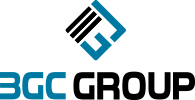How to Minimize Remote Access Cybersecurity Threats
- Karl Aguilar
- Apr 18, 2024
- 2 min read

Remote access technology has been around for a while now. But thanks to the advancements in networking and communication technologies in recent years, not to mention the onslaught of a global pandemic in 2020-22, remote access has become more widely implemented by organizations globally, enabling more effective collaboration and improved work processes that span multiple locations.
But at the same time, cybercriminals are utilizing remote access as a means to disrupt and cause financial ruin for the organizations they are targeting. Complicating matters is that in some cases, their organization’s IT department thus unable to respond quickly to such threats as they happen.
In effectively dealing with these remote access threats, organizations must not only improve their cyber defense capabilities but also empower their personnel to be proactive in fighting them at the onset. Here are some specific ways in which organizations can achieve those goals:
Take time to identify legacy vulnerability management systems. This provides the organization with the much-needed insight into resolving issues before they become mission-critical.
Implement strong authentication methods for key internet-facing systems, such as multi-factor authentication. Such authentication methods will help further secure remote access services and monitor for signs of possible unauthorized access attempts.
Ensure continuous visibility into on-premises and assets of the organization that are accessible online, such as cloud services. This enables team members to immediately address potential breaches in the network.
Determine the most critical vulnerabilities across severity and likelihood through the Common Vulnerability Scoring System and Exploit Prediction Scoring System scores, respectively.
Address cloud misconfigurations by regularly reviewing and updating the organization’s cloud configurations such that it would align with industry best practices and prevent potential vulnerabilities that may arise because of such misconfigurations.
Ensure that the enterprise’s security and DevOps teams work together to drive secure deployments.
Establish mechanisms that will enable the security team to respond to potential threats immediately and that they are regularly maintained and updated. Install protocols and mechanisms to help the security team quickly leverage attack surface management tools to prioritize patches and remediate common exposures.
As remote access continues to evolve and offer more functionalities in the future, it is critical to understand the threats it constantly faces and remain on guard against these threats in order to maintain control over the network and ensure that remote access will continue to provide the benefits and growth it offers for its users.








Comments